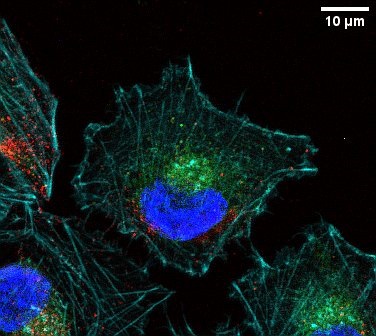New Insights into Unusual Planetary System Challenge Solar System Theories

In a groundbreaking development for exoplanet research, scientists have successfully captured an image of 14 Herculis c, a planet residing in an unusual planetary system located approximately 60 light-years away in the constellation Hercules. This achievement, made possible by the James Webb Space Telescope (JWST), marks a significant advancement in our understanding of planetary systems beyond our own.
Over the past three decades, astronomers have identified around 6,000 exoplanets, primarily through indirect methods such as the transit method, where the dimming of a star's light indicates a planet's presence. However, visual confirmation has remained elusive for many of these celestial bodies, particularly those in colder environments.
William Balmer, a Ph.D. student at Johns Hopkins University and first co-author of the study published in the Astrophysical Journal Letters on October 15, 2023, stated, "The colder an exoplanet, the harder it is to image, so this is a totally new regime of study that Webb has unlocked with its extreme sensitivity in the infrared." The JWST's capability to detect infrared radiation has allowed researchers to observe 14 Herculis c, which has an estimated average surface temperature of minus 3 degrees Celsius.
The newly captured image reveals that the planet orbits a sun-like star, 14 Herculis, which is slightly smaller than our Sun. Unlike most known solar systems where planets orbit in a similar plane, the two planets in this system, 14 Herculis b and 14 Herculis c, follow paths that are tilted 40 degrees apart, creating an unusual X-shaped configuration. Researchers hypothesize that this peculiar alignment may be due to the violent ejection of a third planet in the system's past, a scenario that alters the orbital characteristics of the remaining planets.
In addition to this discovery, the week in space has also seen setbacks and successes in other areas of space exploration. The fourth private mission by Axiom Space to the International Space Station (ISS), known as AX-4, has faced delays due to technical issues. Originally scheduled for launch last week, the mission was postponed following a liquid oxygen leak detected in the Falcon 9 rocket, which is set to carry veteran astronaut Peggy Whitson and three other international astronauts to the ISS. Whitson, who holds the U.S. record for the most cumulative time spent in space, leads a mission that includes scientific objectives such as an Israeli-led experiment studying upper-atmospheric phenomena during thunderstorms.
The AX-4 mission highlights the collaborative nature of modern space exploration, with contributions from researchers like Prof. Yoav Yair of Reichman University, who has been involved in the experiment since AX-1. The experiment aims to capture transient events that occur above thunderstorms, a project that has evolved through multiple Axiom missions and now includes educational outreach components in countries such as India.
Moreover, Rocket Lab, an American aerospace manufacturer, successfully launched a radar satellite for the Japanese company iQPS, marking the 66th flight of its Electron rocket. This launch is part of a contract to establish a 36-satellite constellation for global radar imaging services. Rocket Lab aims to expand its capabilities and successfully execute 20 launches by 2025, further solidifying its position in the small-to-medium satellite launch industry.
As advancements in telescope technology and private space exploration continue, the scientific community eagerly anticipates future discoveries that could reshape our understanding of planetary systems and the dynamics of celestial bodies. The implications of these findings extend beyond mere curiosity; they challenge existing theories and open new avenues for research and exploration in the vast expanse of our universe.
Advertisement
Tags
Advertisement





